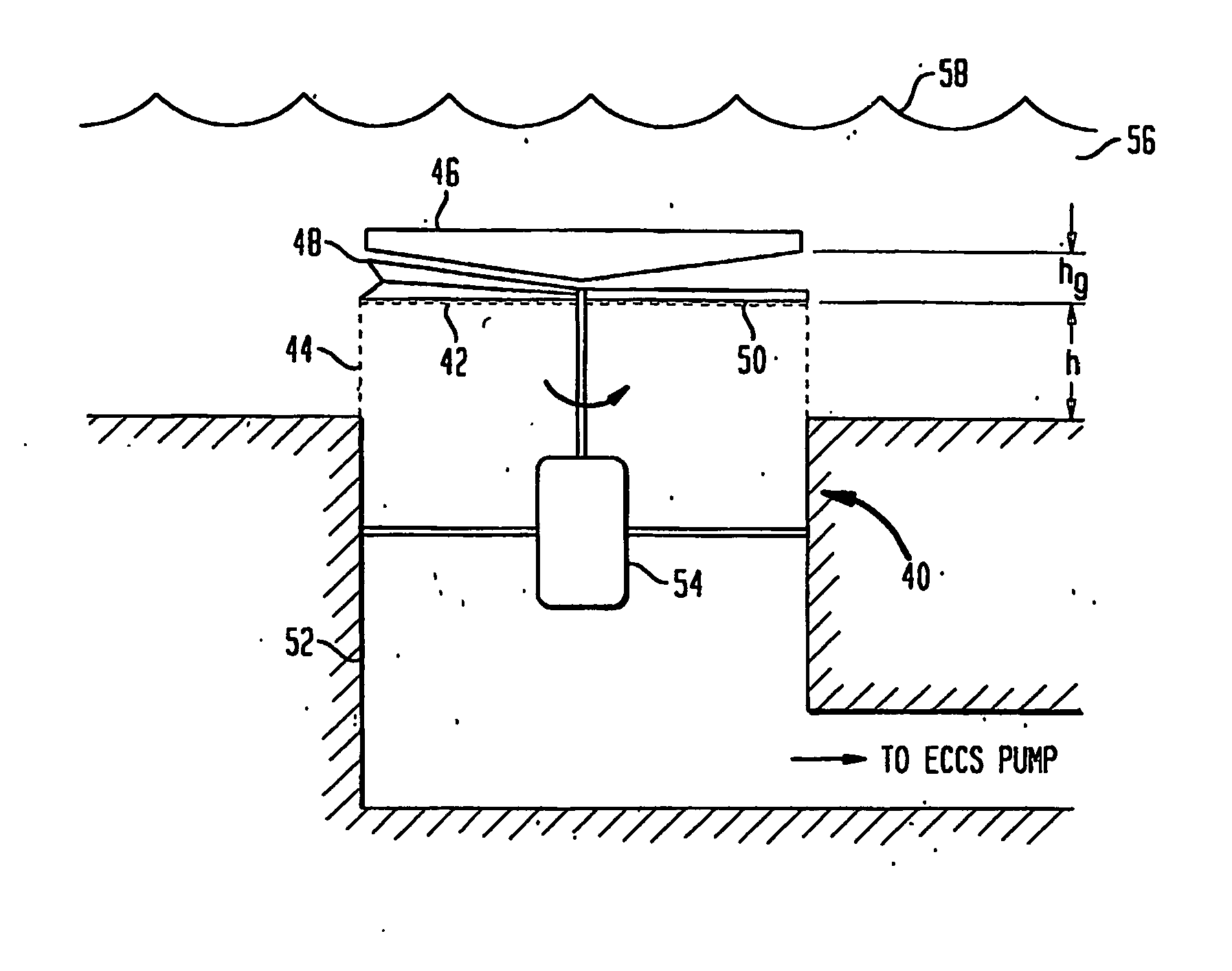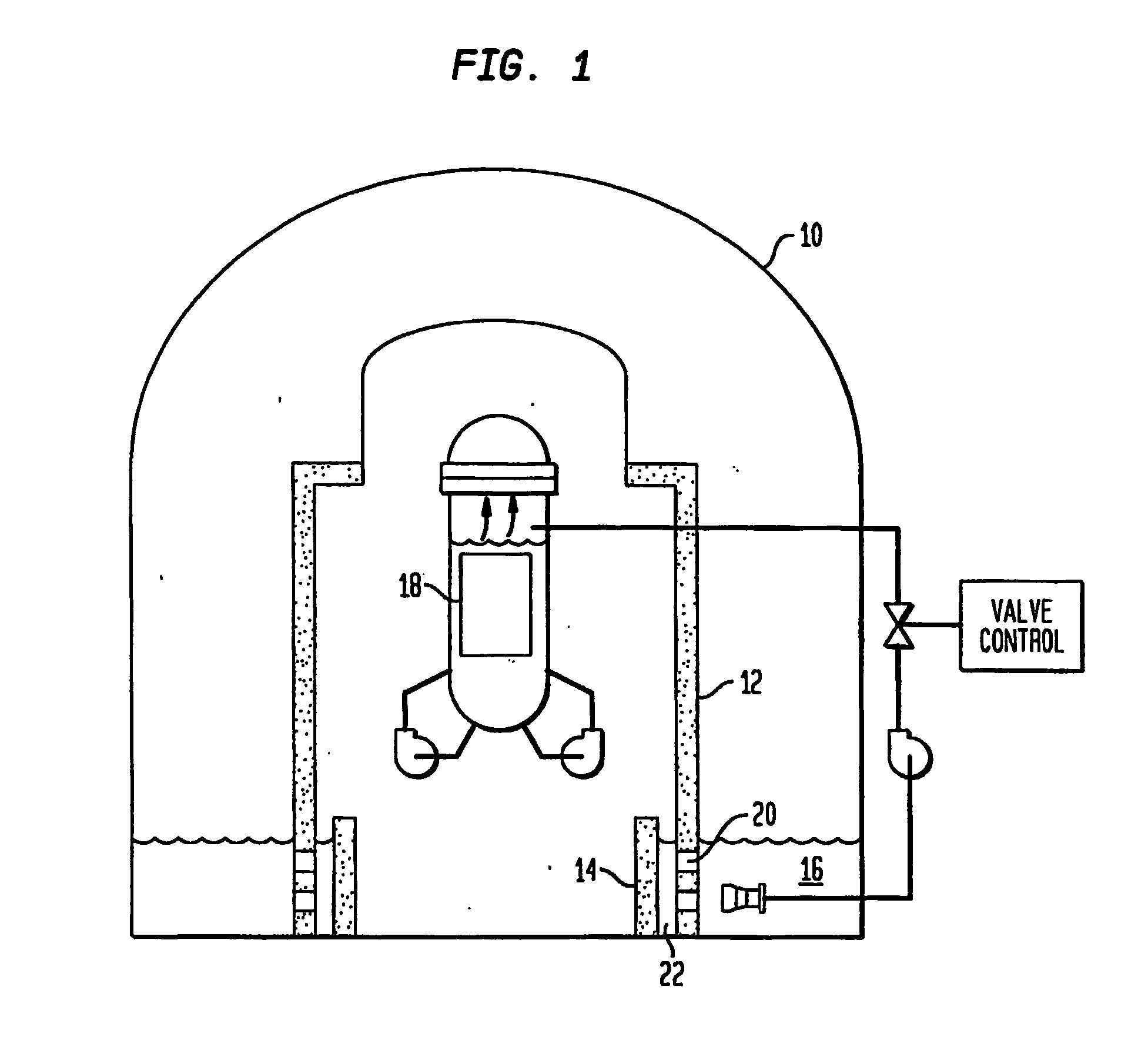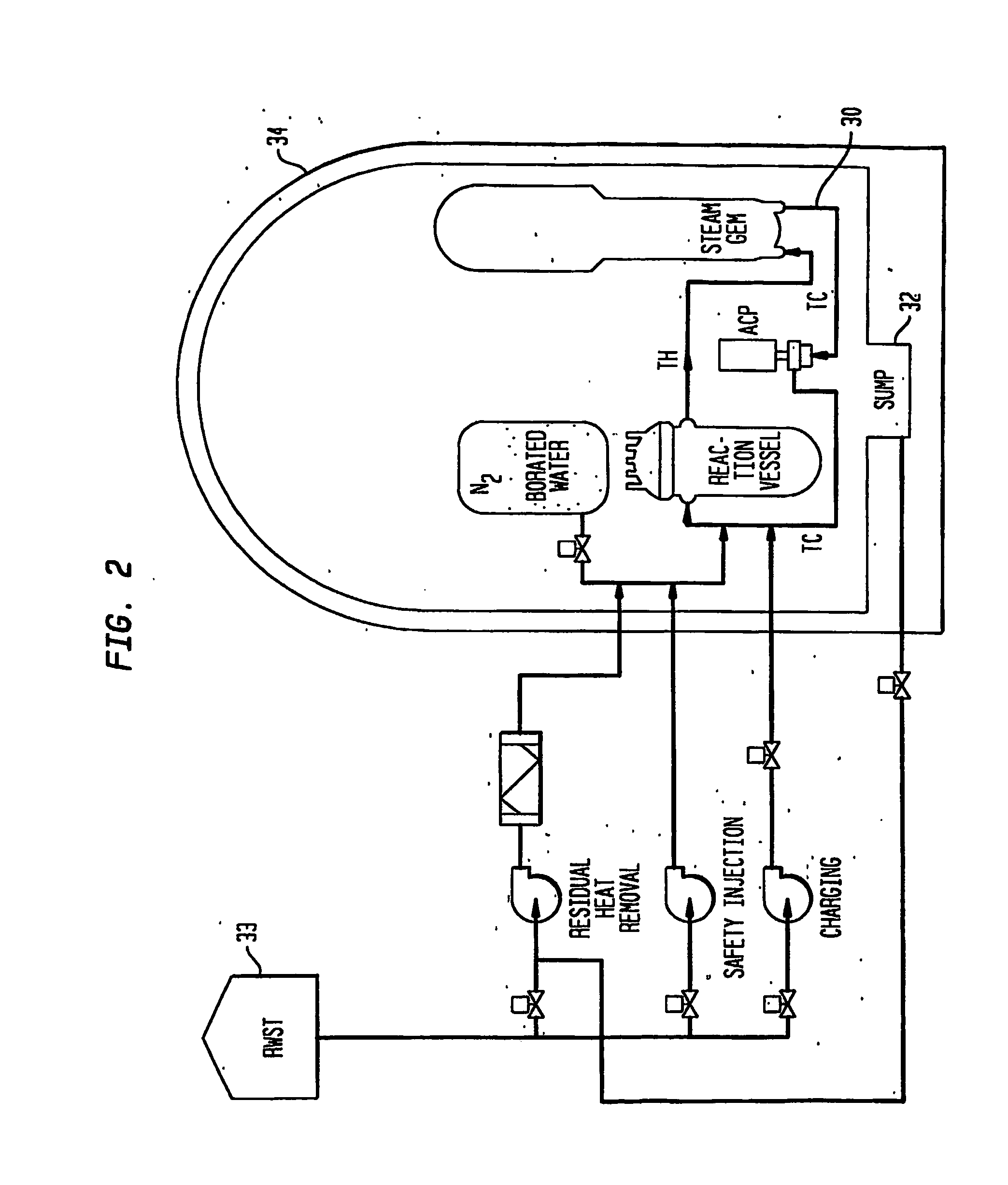Self-cleaning strainer
- Summary
- Abstract
- Description
- Claims
- Application Information
AI Technical Summary
Benefits of technology
Problems solved by technology
Method used
Image
Examples
Embodiment Construction
[0033] The present invention relates to externally powered, self-cleaning strainers having a missile shield and a low pressure drop across the strainer.
[0034] To understand the inventive concepts of the present invention it is useful to refer to the attached drawings in which like numbers refer to like elements.
[0035]FIG. 3 shows various components of an exemplary self-cleaning strainer that can be utilized to implement the inventive concepts described herein. The self-cleaning strainer includes a top inlet mesh or screen 42, a side inlet mesh or screen 44, a combined jet or missile shield and pump end plate 46, a plow or impeller 48, a brush 50, a loop 52 and a drive motor 54.
[0036] The loop 52 and top screen 42 and side screen 44 are typical of dry PWR containments as constructed at many sites within the United States of America. The sump 52 is normally dry, so that at the start of a postulated LOCA, it may be exposed to the initial jet and missile debris predicted in such circ...
PUM
| Property | Measurement | Unit |
|---|---|---|
| Flow rate | aaaaa | aaaaa |
| Speed | aaaaa | aaaaa |
| Distance | aaaaa | aaaaa |
Abstract
Description
Claims
Application Information
 Login to View More
Login to View More - R&D
- Intellectual Property
- Life Sciences
- Materials
- Tech Scout
- Unparalleled Data Quality
- Higher Quality Content
- 60% Fewer Hallucinations
Browse by: Latest US Patents, China's latest patents, Technical Efficacy Thesaurus, Application Domain, Technology Topic, Popular Technical Reports.
© 2025 PatSnap. All rights reserved.Legal|Privacy policy|Modern Slavery Act Transparency Statement|Sitemap|About US| Contact US: help@patsnap.com



